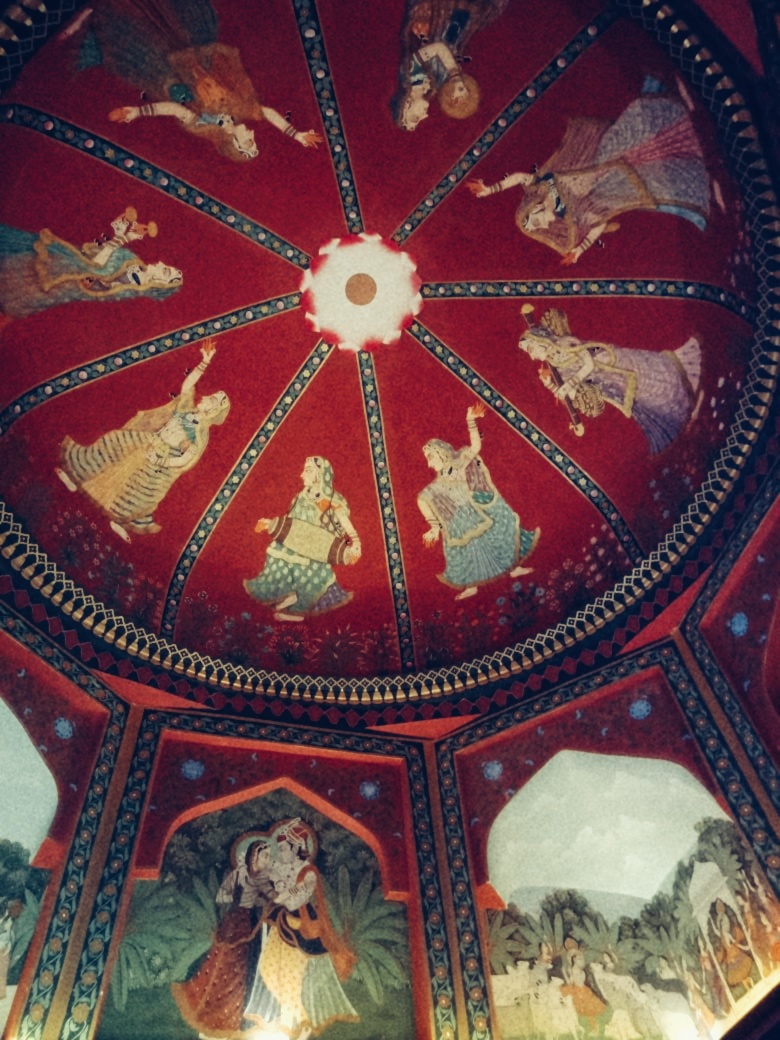Unbeknownst to you — MAHARANA PRATAP & GOGUNDA are mentioned in the same breath as RAJPUTANA culture. You'll be going off-target if you believe forts were supposed to be raised in the densely populated areas. No indeed! Located in the village of gogunda, the beautiful age-old century fort of Maharana Pratap is restored into a sanctuary of palace experience. We were in UDAIPUR & witnessed one such edifice where the king was grandly coronated, it is the GOGUNDA PALACE welcoming you by opening it's "hathi pol" gates! The whole fortress and abutting areas were screaming the RAJPUT "gharana" and art. But the sweet smell of sugarcane syrup permeated the air as we entered into the interiors of the village. Our driver informed how jaggery making is a prominent affair in his village.
So we saw how most of the farmers there were cultivating sugarcane and owned a jaggery-making unit. Earliest pointer that shrieked the culture of the village. We forge ahead deep into the forests of ARAVALLI, heard it's one of the oldest remnant of king's conceal for his ammunitions. We were appalled! Was it still there?
We go on a safari drive and solemnly arrive at the place where the king used to hide his projectiles. An enfolded cave was before us! We started to inspect & true to god, we saw the graphical glimpse into how various weapons used in the warfare were camouflaged there. It's known to be the MYRAH KI GUFAH! The nature was in full focus, the deforestation rampage has still not reached the respective area of the forest we were scouting at, but the sacred grove that's been protected by the local community was a sight to behold. The canopy was limpid, gigantic trunks of the trees were recognisable. The next pointer that was yelling all about a combat between the kings.
And, when we spoke of restoration in the beginning of our travelogue, very intelligently what we saw was how every original detail was actually put back with the old-world charm — be it the traditional handi lamps or the palatial bathrooms, at the fortress. To the letter, it was squealing RAJASTHANI culture without fail. The ternary pointer made us feel slightly demented — how is stone being carved in the open? We saw panels being made of stone, relief work being combined with trellis work. And the same stone was untouched at the royal residency.
Special gogunda stone bathrooms completed our regal experience! Coming to the quad pointer of being the guest of RAJ TILAK STHAL of Maharana Pratap, again, we were enchanted. Turned out to be unimaginably a significant place because the monarch was paid tributes there! The headliner is yet to come — since, you wouldn't want to miss the RAJ MAHAL in the stately home. Star turn was the wooden elevator that took us to the opulence and grandeur of KUNWAR's existent territory. So much of grandeur, the hint of his masculine overtones — we were awed. Standing where the MAHARANA of MEWAR used to doze was nothing less than feeling that top act. From every angle, we were glancing at the SISODIA dynasty coming from the fifteenth century and mind you, it was unspoiled! Decorated in red because the manager told us they wanted to represent his strength and courage, there was this hand-painted dome depicting the scenes of KRISHNA LEELA. We were slightly bewildered over the connection.
The past says BHARAT KA VEER was a devotee of KRISHNA & SHIVA, we were beholding it everywhere in the village. Wherever there was a mirroring of the king, to his opposite will be a temple of SHIVA & it's truthful. We caught a glimpse of it! A little about the RAJASTHANI cuisine — even that had the touch of regal culture in it. DAL BAATI CHURMA, the BIKANERI BHUJIA garnered our attention. The game of meat turned out to be luscious, especially if you are a pakka non-vegetarian because the presence of LAAL MAAS & KHAD KHARGOSH are exotic! The BAJRE KI ROTI, RAJASTHANI KADHI and LEHSUN KI CHUTNEY were amongst our favourites. Summing-up the one-reel with a moving glance of JANANI COURTYARD in the chateau took us back to the what we call as "aangan" now.
The outside world of politics between the kingdoms never reached the women there! The RANI NIVAS was also unblemished, and from there we saw a link to innumerable suites in the form of a circle because that's how it used to be in dead and buried times. To involve yourself with some MEWARI art and exclusivity of KOTHARS and domes being turned into living quarters, you most visit the village of gogunda and the only castle turned into a haveli now.

.png)
.jpg)